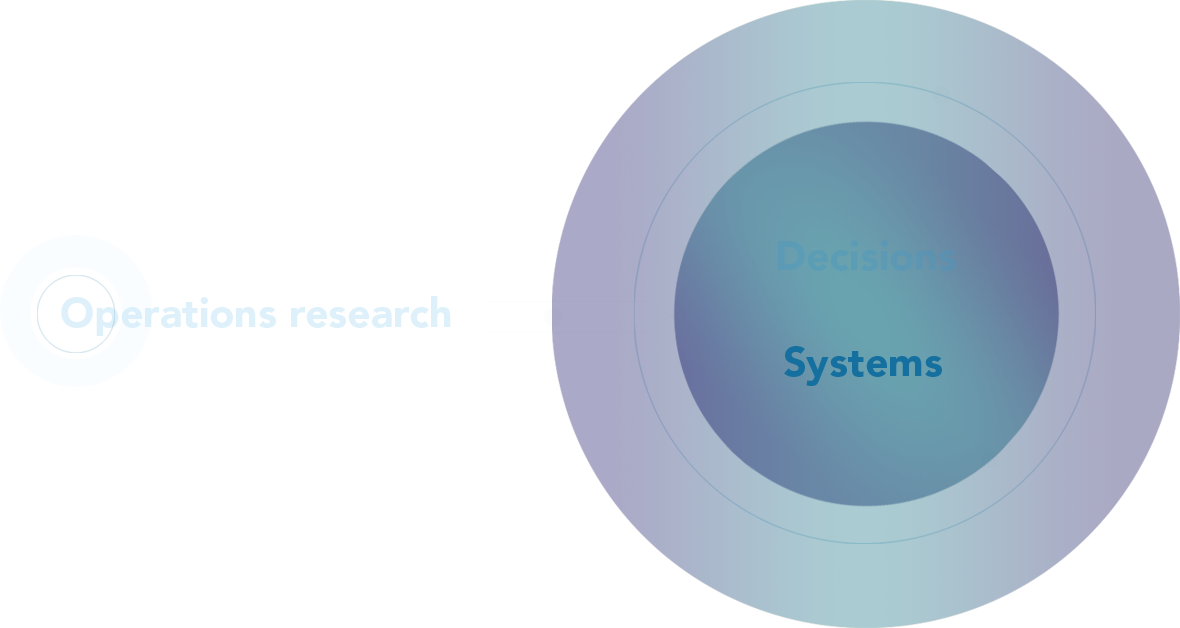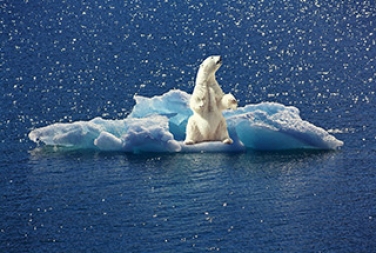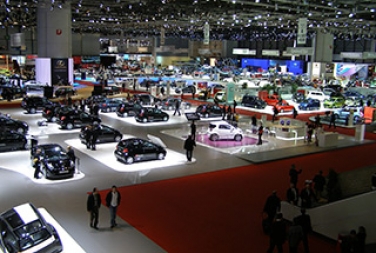Scenarios
Simple operational research Model with co2 air capture
Different scenarios obtained with the SORMAC-22 model will be presented and updated regularly on our website.
- Explore a baseline climate scenario (BAU)
- Explore a scenario with the SORMAC-22 model that limits the temperature increase to 2 degrees C, with moderate penetration of CDR/DAC technologies.
- Explore with the SORMAC-22 model a scenario with a cumulative emissions budget of 1170 Gt of CO2, a larger penetration of direct atmospheric CO2 capture (DAC)and implementation of an international carbon market.
SORMAC-23
Is a simplified model, based on operational research techniques, which allows the construction of long-term economic growth scenarios, under environmental constraints limiting the increase in atmospheric temperature. The aim of this model is to illustrate the role of CDR/DAC technologies in achieving the long-term goals of the Paris agreement.
SORMAC-23 is an extension of the model described in [F. Babonneau, A. Haurie, M. Vielle, Reaching Paris Agreement goal through carbon dioxide removal development: A compact OR model. Operations Research Letters
It is now well established that reaching Paris agreement goals requires industrialized countries to reach a zero-net emissions regime by 2050 or 2070 at the latest (see e.g. S. Bouckaert and et al. Net Zero by 2050: a Roadmap for the Global Energy Sector. International Energy Agency, 2021). CDR (CO2 Direct Reduction) technologies, in particular, BECCS (Biomass Energy with Carbon Capture and Sequestration) and DAC (Direct Air Capture) with sequestration, will then play an important role in producing 'negative' emissions to offset the emissions due to the remaining use of fossil fuels.
Different regions in the world have access to large reservoirs to store CO2 and to a clean and cheap source of energy to run the CDR activities. In some scenarios (see e.g. F. Babonneau, A. Badran, M. Benlahrech, A. Haurie, M. Schenckery, and M. Vielle. Economic assessment of the development of CO2 direct reduction technologies in long-term climate strategies of the gulf countries. Climatic Change, 165(64):1–18, 2021) one envisions a global level of negative emissions of the order of 10Gt of captured CO2 per year, which is huge. Negative emissions would then become a new important resource traded on an international carbon market.
The originality of the proposed model lies in the use of nested CES production functions to describe (i) the production of a general economic good, (ii) the production of renewable and fossil secondary energy, and, (iii) CDR/DAC activities, respectively.
A dynamic optimization structure is proposed, where state variables are the capital stocks and the remaining safety cumulative emission budget at each time step. The control variables are the investment decisions and the supply of emission rights to the international carbon market.
Climate module
SORMAC-23 includes a climate module from DICE-2014. This is a multi-layered ocean warming model, with an increase in atmospheric temperature triggered by the accumulated concentration of GHGs that defines a radiative forcing.
The climate model is calibrated as in DICE-2014. Interestingly, we have observed that the security budget of one trillion tonnes of carbon produces, with this model, a temperature increase (SAT) of around 2° C. This is consistent with recent publications concerning the cumulative safety emissions budget..
Damage function
We have also borrowed a damage function from DICE-2014. It defines GDP loss, in %, as a quadratic function of temperature increase. This function defines only the loss in the market economy. It is used to run the model in cost-benefit mode.
To limit all damage, economic and ecological, it is preferable to run the model in cost-effectiveness mode, imposing an upper limit either on the temperature rise (i.e. 2°C), or on the remaining cumulative emissions budget (i.e. 1170 Gt CO2 ).
In DICE notation, damages are defined by the following two equations:
Damage equations
damfraceq(t) .. DAMFRAC(t) =E= (a1*TATM(t))+(a2*TATM(t)**a3) ;
dameq(t).. DAMAGES(t) =E= YGROSS(t) * DAMFRAC(t);
a1 Damage intercept /0 /
a2 Damage quadratic term /0.00267 /
a3 Damage exponent /2.00 /
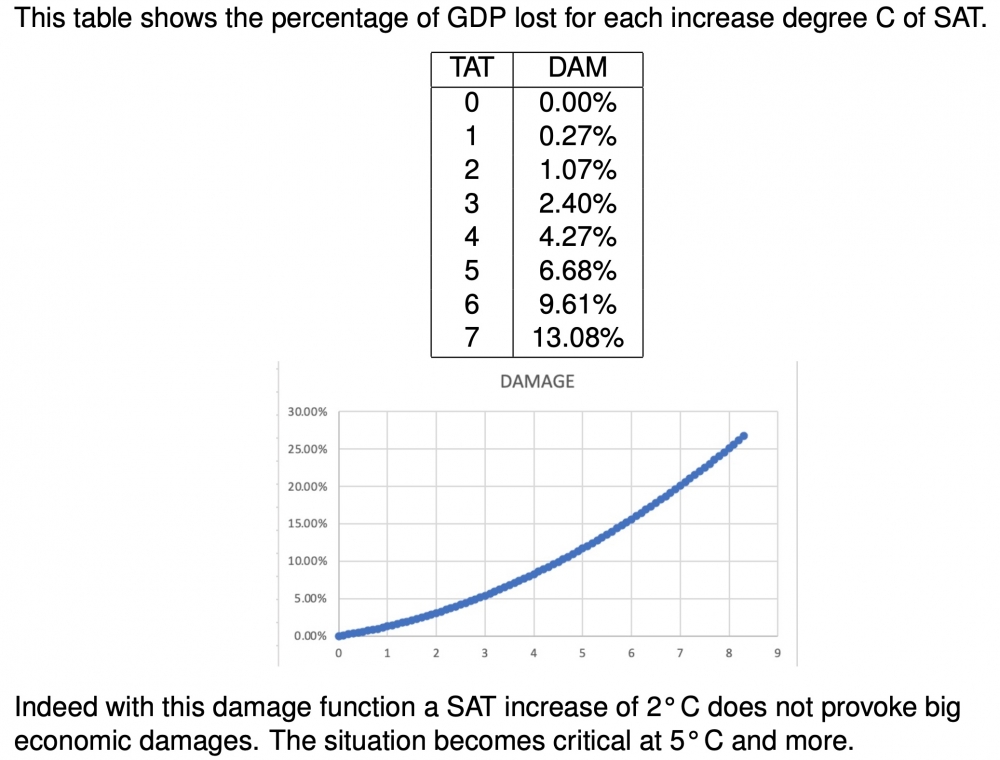
Production structure
We use production functions with constant elasticities of substitution (CES).
Production of the general good
The production factors are (i) capital K0, (ii) labor L0 and (iii) energy E0.
Exogenous growth parameters
Generation of negative emissions
Negative emissions are achieved by direct capture of CO2 from the air (CDR/DAC). These technologies require capital (K3), labor (L3), and energy (E3).
Generation of secondary energy
The useful energy E0+E3 is provided by secondary energy production of fossil (enf0) or renewable (enr) origin. Fossil fuels require capital (K1), e.g. power plants, and primary fossil fuels (enf1). Renewable energy sources require mainly capital (K2), i.e. equipment.
Primary energy from fossil sources
Fossil energy sources are oil, gas, and coal. It is also the main source of greenhouse gas (GHG) emissions.
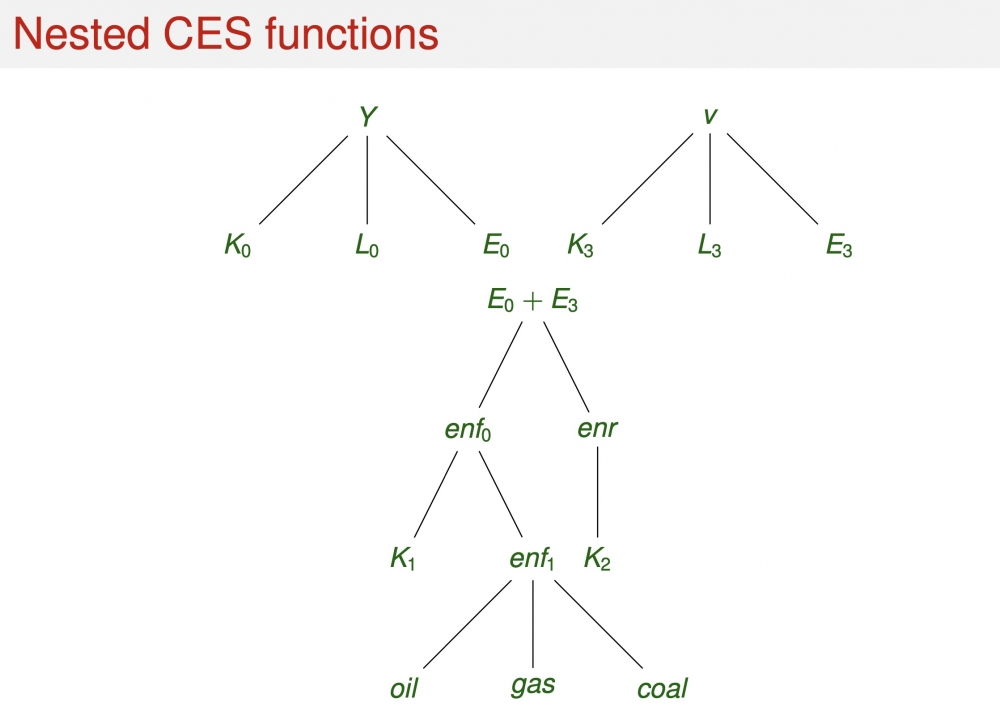
Calibration
The reference base year is 2014.



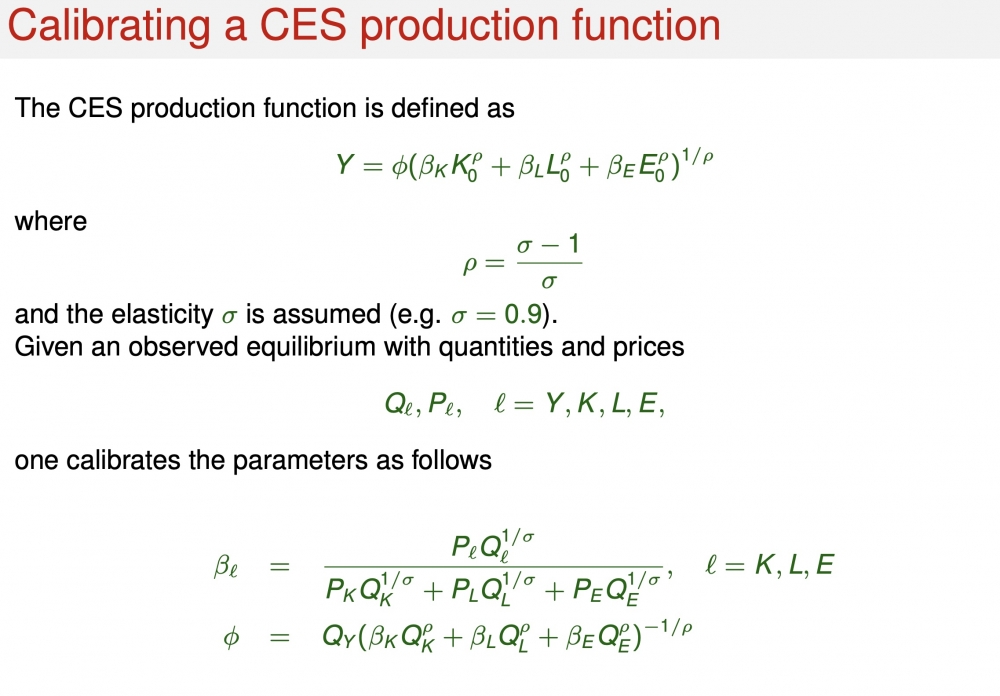
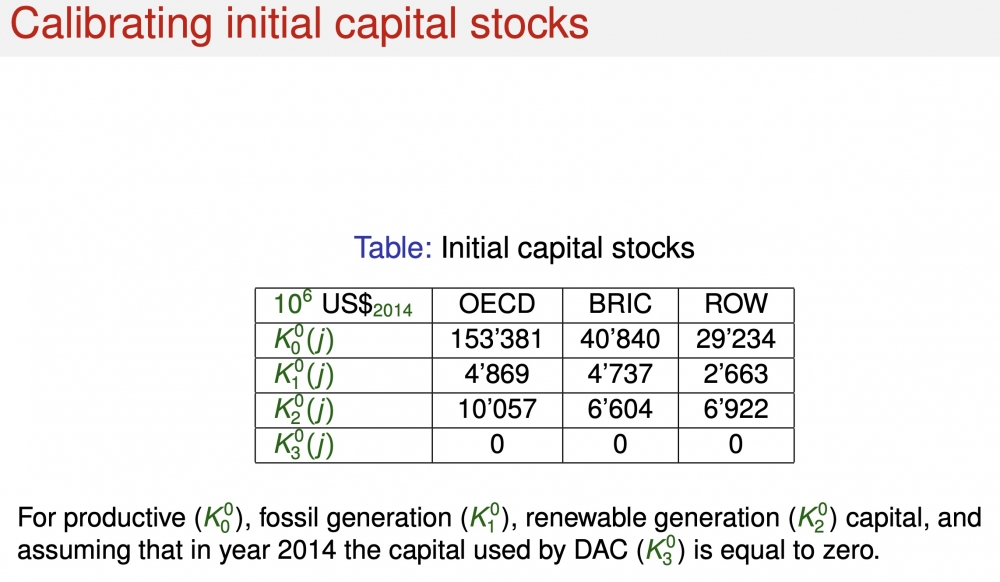
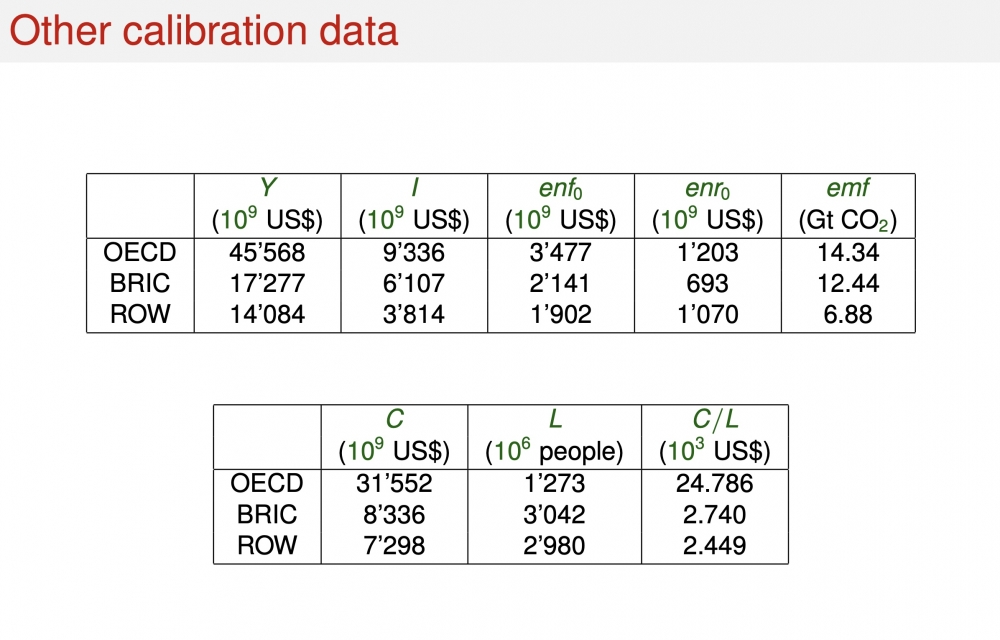
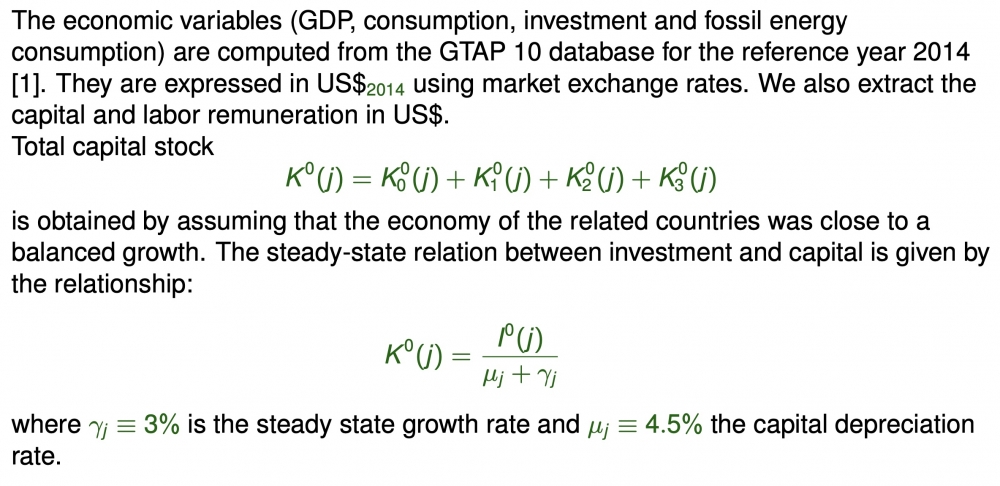
References
[1] A. Aguiar, M. Chepeliev, E. Corong, R. McDougall, and D. van der Mensbrugghe. The GTAP data base: Version 10. Journal of Global Economic Analysis, 4(1):1–27, 2019.
